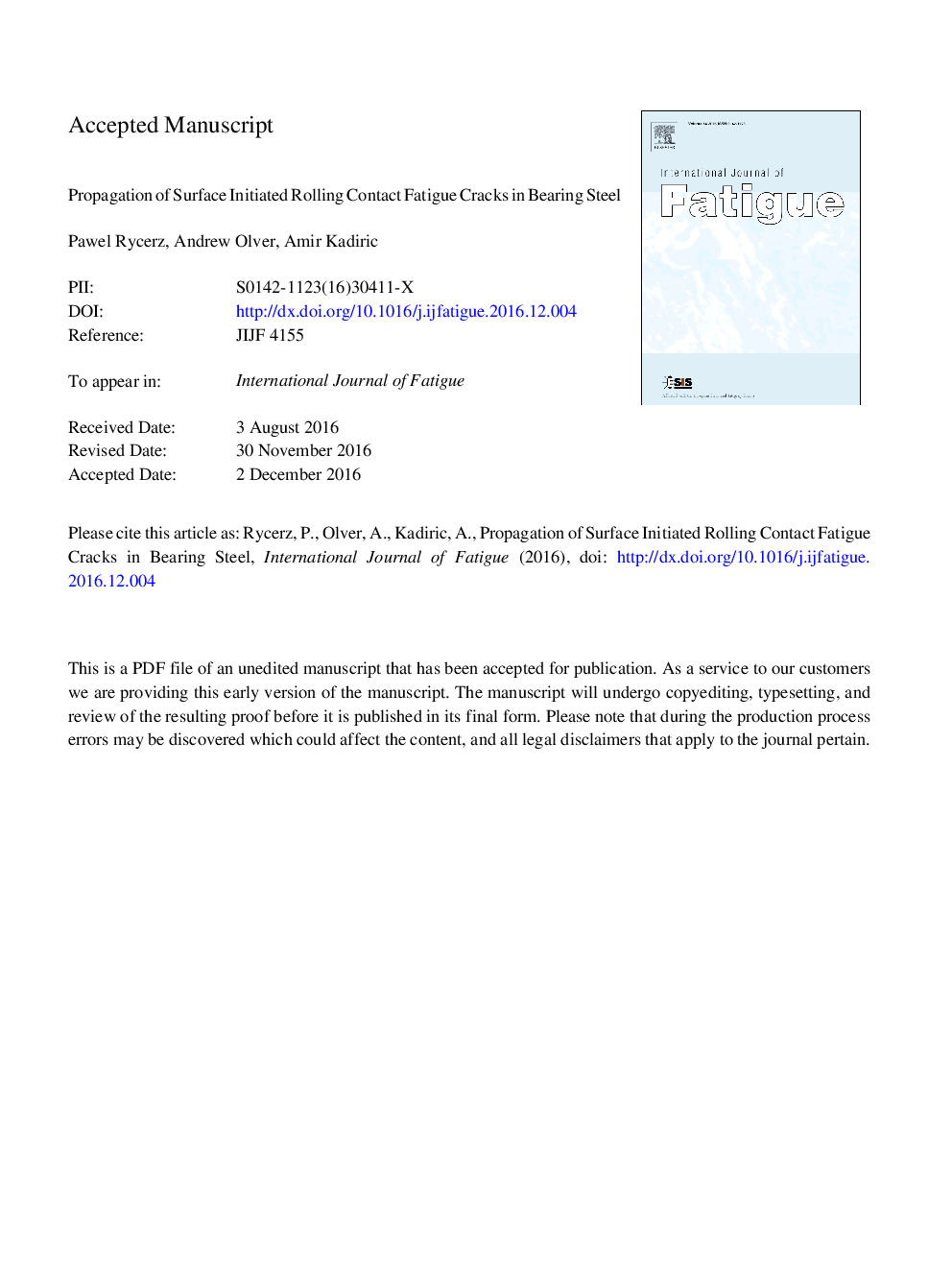| کد مقاله | کد نشریه | سال انتشار | مقاله انگلیسی | نسخه تمام متن |
|---|---|---|---|---|
| 5015248 | 1463728 | 2017 | 36 صفحه PDF | دانلود رایگان |
عنوان انگلیسی مقاله ISI
Propagation of surface initiated rolling contact fatigue cracks in bearing steel
ترجمه فارسی عنوان
انتشار ضایعات خستگی نورد در سطح فولاد تحمل می شود
دانلود مقاله + سفارش ترجمه
دانلود مقاله ISI انگلیسی
رایگان برای ایرانیان
کلمات کلیدی
خستگی تماس نورد، پیتینگ، انتشار کراک، یاطاقان نورد، پوسته پوسته شدن
موضوعات مرتبط
مهندسی و علوم پایه
سایر رشته های مهندسی
مهندسی مکانیک
چکیده انگلیسی
Surface initiated rolling contact fatigue, leading to a surface failure known as pitting, is a life limiting failure mode in many modern machine elements, particularly rolling element bearings. Most research on rolling contact fatigue considers total life to pitting. Instead, this work studies the growth of rolling contact fatigue cracks before they develop into surface pits in an attempt to better understand crack propagation mechanisms. A triple-contact disc machine was used to perform pitting experiments on bearing steel samples under closely controlled contact conditions in mixed lubrication regime. Crack growth across the specimen surface was monitored and crack propagation rates extracted. The morphology of the generated cracks was observed by preparing sections of cracked specimens at the end of the test. It was found that crack initiation occurred very early in total life, which was attributed to high asperity stresses due to mixed lubrication regime. Total life to pitting was dominated by crack propagation. Results provide direct evidence of two distinct stages of crack growth in rolling contact fatigue: stage 1, within which cracks grow at a slow and relatively steady rate, consumed most of the total life; and stage 2, reached at a critical crack length, within which the propagation rate rapidly increases. Contact pressure and crack size were shown to be the main parameters controlling the propagation rate. Results show that crack propagation under rolling contact fatigue follows similar trends to those known to occur in classical fatigue. A log-log plot of measured crack growth rates against the product of maximum contact pressure and the square root of crack length, a parameter describing the applied stress intensity, produces a straight line for stage 2 propagation. This provides the first evidence that growth of hereby-identified stage 2 rolling contact fatigue cracks can be described by a Paris-type power law, where the rate of crack growth across the surface is proportional to the contact pressure raised to a power of approximately 7.5.
ناشر
Database: Elsevier - ScienceDirect (ساینس دایرکت)
Journal: International Journal of Fatigue - Volume 97, April 2017, Pages 29-38
Journal: International Journal of Fatigue - Volume 97, April 2017, Pages 29-38
نویسندگان
Pawel Rycerz, Andrew Olver, Amir Kadiric,
